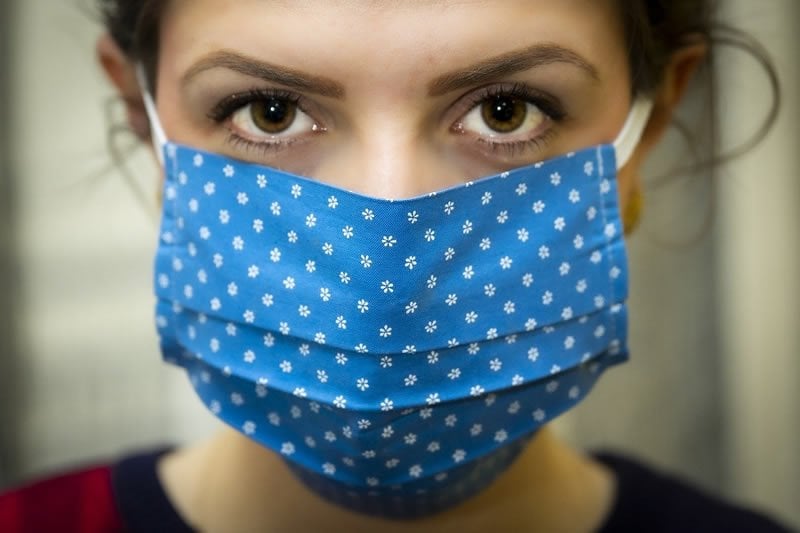Summary: Study reports viral shedding of SARS-CoV-2 occurs in the upper respiratory tract during early COVID-19 infection when symptoms are mild or hardly noticeable.
Source: Nature
Detailed virological analysis of nine adults from Munich, Germany, with comparatively mild symptoms of COVID-19 respiratory disease is reported in a paper published in Nature. The study shows that there is active replication of coronavirus SARS-CoV-2 in the upper respiratory tract of the patients and suggests that patients may ‘shed,’ or excrete, the virus at high levels during the first week of symptoms.
Christian Drosten and colleagues studied viral shedding in nine young and middle-aged adults diagnosed with COVID-19, who were treated for mild upper respiratory tract symptoms at a single hospital in Munich. They analyzed throat and lung samples, sputum (mucus from the respiratory tract), and stool, blood and urine collected from the patients during their clinical course.
The authors found high levels of virus replication in upper respiratory tract tissues, and report high levels of viral shedding in the upper respiratory tract during the first week of symptoms. They could isolate an infectious form of the virus from samples taken from the throat and lungs of the patients until day eight of symptoms, as symptoms waned. Two of the patients, who showed some early signs of pneumonia, continued to shed high levels of the virus in the sputum until day ten or eleven. Viral RNA remained detectable in the sputum after the end of symptoms.
The virus was not detected in blood or urine samples, and the authors did not find a replicating form of the virus in stool samples, despite high concentrations of viral RNA, supporting the theory that the virus may not be transmissible via stool. However, additional studies in larger samples are needed to investigate this possible transmission route further.

Taken together, these initial findings indicate that shedding of SARS-CoV-2 in the upper respiratory tract occurs most efficiently early on, when patients still have mild symptoms. Further research could help to assess whether increases in the viral load of a patient after the first week of symptoms could signal an aggravation of symptoms, the authors suggest.
Source:
Nature
Media Contacts:
Press Office – Nature
Image Source:
The image is in the public domain.
Original Research: Closed access
“Virological assessment of hospitalized patients with COVID-2019”. Roman Wölfel, Victor M. Corman, Wolfgang Guggemos, Michael Seilmaier, Sabine Zange, Marcel A. Müller, Daniela Niemeyer, Terry C. Jones, Patrick Vollmar, Camilla Rothe, Michael Hoelscher, Tobias Bleicker, Sebastian Brünink, Julia Schneider, Rosina Ehmann, Katrin Zwirglmaier, Christian Drosten & Clemens Wendtner.
Nature doi:10.1038/s41586-020-2196-x.
Abstract
Virological assessment of hospitalized patients with COVID-2019
Coronavirus disease 2019 (COVID-19) is an acute respiratory tract infection that emerged in late 20191,2. Initial outbreaks in China involved 13.8% cases with severe, and 6.1% with critical courses3. This severe presentation corresponds to the usage of a virus receptor that is expressed predominantly in the lung2,4. By causing an early onset of severe symptoms, this same receptor tropism is thought to have determined pathogenicity, but also aided the control, of severe acute respiratory syndrome (SARS) in 20035. However, there are reports of COVID-19 cases with mild upper respiratory tract symptoms, suggesting the potential for pre- or oligosymptomatic transmission6–8. There is an urgent need for information on body site-specific virus replication, immunity, and infectivity. Here we provide a detailed virological analysis of nine cases, providing proof of active virus replication in upper respiratory tract tissues. Pharyngeal virus shedding was very high during the first week of symptoms (peak at 7.11 × 108 RNA copies per throat swab, day 4). Infectious virus was readily isolated from throat- and lung-derived samples, but not from stool samples, in spite of high virus RNA concentration. Blood and urine never yielded virus. Active replication in the throat was confirmed by viral replicative RNA intermediates in throat samples. Sequence-distinct virus populations were consistently detected in throat and lung samples from the same patient, proving independent replication. Shedding of viral RNA from sputum outlasted the end of symptoms. Seroconversion occurred after 7 days in 50% of patients (14 days in all), but was not followed by a rapid decline in viral load. COVID-19 can present as a mild upper respiratory tract illness. Active virus replication in the upper respiratory tract puts the prospects of COVID-19 containment in perspective.






